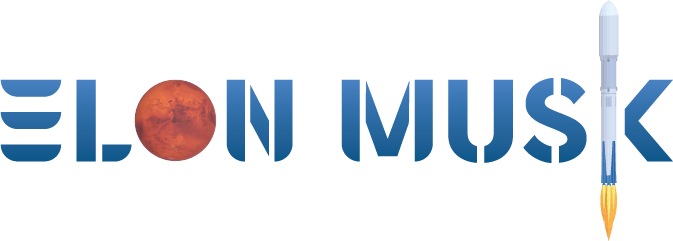
FAA gives Flight 7 the Go Ahead, SpaceX...
- by NASASpaceFlight.com
- Dec 19, 2024
- 0 Comments
- 0 Likes Flag 0 Of 5

Click here to Join L2
The first part of the statement allows SpaceX to use the Flight 7 mission profile multiple times. This refers to using a Block 2 Ship and Block 1 Booster on a suborbital trajectory. While the trajectory is the same as in the past six flights, the vehicle combination has changed due to Block 2 of Ship. This could mean that SpaceX still intends to fly suborbital missions for a few more flights or at least has the option to do so without another license modification.
The FAA also discusses how the agency continues to increase its licensing duties efficiency to try to meet the demands of the commercial space industry. Considering the rapid turnarounds of the past few license modifications and the timely return to flights for Falcon 9 throughout the year, the FAA is undoubtedly making progress.
The license’s basic verbiage regarding the vehicle configuration for the flight is: “Using the Starship-Super Heavy vehicle.” This has been the same since Flight 5 and has only been changed once which was for Flight 4 where it stated, “Using Ship 29-Booster 11Starship-Super Heavy vehicle Configuration, unless this license is modified to remove this term”. This definition might cover SpaceX at least through the end of Block 1 of Booster.
Regarding Block 2 of the Ship, it was thought that due to the extended tanks and many other changes, a significant modification might have been required for Block 2 of the ship. However, it appears that the FAA has deemed the current definition of the vehicle to cover the changes in design.
Revisions to Starship Launch License (Credit: Federal Aviation Administration)
The only changes to the license were the addition of Paragraph 12, which is “Highly Reliable Flight Safety System Tailoring,” which then states: “SpaceX must receive FAA signature on RCC-324-11 tailoring change request, TR24-001-STARSHIP, prior to
initiation of Flight 7.” RCC-324-11 is for Global Positioning and Inertial Measurements Range Safety Tracking System Commonality Standard. This means that before Flight 7, SpaceX must update its document for Range Safety and Tracking.
This standard is used by many ranges across the United States, such as the White Sands Missle Test Range and the 30th and 45th Space Wings, which are located at Vandenburg Space Force Base and Cap Canaveral Space Force Station, respectively. This is for standardizing range operations for Starship in Boca Chica, Texas.
SpaceX operates Starship under Part 450 of Title 14 of the Federal Aviation Regulations. Under Part 401.7 are the definitions of what constitutes a Mishap during any given launch under Part 450.
Mishap Definitions (Credit: Federal Aviation Regulations)
So far in the program, the FAA has allowed SpaceX to have specific failure modes that would not trigger a mishap investigation, as things are still experimental and are a work in progress. To date these were failure of the thermal shield during high heating, failure of the flap system during high dynamic pressure, and failure of the Raptor engine system during the Starship landing burn.
For Flight 7 and beyond, the FAA has added two new failure mode exceptions: first is the failure of the Raptor engine system during in-space demonstration burn, and second is the failure of Super Heavy systems during post-booster catch vehicle safing. These additions allow SpaceX to try different things with in space burns and with post-catch safing and not have to have a mishap investigation if there were to be a failure. However, an investigation will be required if any of these failure modes cause a safety issue or injury.
Booster 12 on the OLM after being Safed (Credit: BocaChicaGal for NSF)
Flight 7 Vehicles and Pad
With the regulatory part out of the way, SpaceX must now focus on vehicle readiness. To that end, Ship 33 completed a couple of engine tests at Masseys. The first was a spin prime on Dec. 12. The reason for doing a spin prime is that Ship 33 has upgraded engine plumbing from Block 1 ships, and SpaceX needs to verify it before proceeding to a static fire test. On Dec 14, Ship 33 did tank up as if it were to possibly static fire but either aborted or SpaceX was performing another type of test.
On Dec. 15 and 16, SpaceX performed two static fires of Ship 33; the first test was a full six-engine static fire, and the second was a single-engine static fire testing the deorbit burn with some engine gimbaling added. Ship 33 is the first Ship to a deorbit burn test fire since Ship 29 on the old Suborbtial Pad B.
Single engine static fire demonstrating a flight-like startup for an in-space burn pic.twitter.com/jELpcCOaO5
Please first to comment
Related Post
Stay Connected
Tweets by elonmuskTo get the latest tweets please make sure you are logged in on X on this browser.
Sponsored
Popular Post
Middle-Aged Dentist Bought a Tesla Cybertruck, Now He Gets All the Attention He Wanted
32 ViewsNov 23 ,2024
Tesla: Buy This Dip, Energy Growth And Margin Recovery Are Vastly Underappreciated
28 ViewsJul 29 ,2024






 Energy
Energy



















